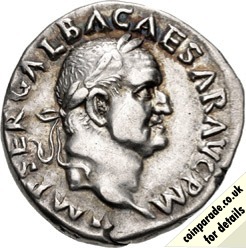
List items on:
 | Roman Coin Silver Postumus (259-268 AD) AR Antoninianus £ 16.00 |
 | 5 x Assorted Uncleaned Random Roman Bronze Coin 2 - 4th Century AD £ 5.49 |
 | Roman coin showing Soldiers Standards on reverse nice details cleaned 1 per bid £ 4.00 |
 | SCARCE ANCIENT ROMAN COIN. CONSTANTINE I. VICTORY. CYZICUS, 330-333CE. -GENUINE- £ 40.00 |
 | Roman silvered antoninianus of Postumus SAECULI FELICITAS £ 20.00 |
 | Ancient Roman coins 3rd to 4th century cleaned low grade 10 per bid weak detail £ 4.00 |
![Ancient Roman bronze Antoninianus Allectus 293-296 AD London mint - [My ref E]](//coinparade.co.uk/wp-content/plugins/a3-lazy-load/assets/images/lazy_placeholder.gif) | Ancient Roman bronze Antoninianus Allectus 293-296 AD London mint - [My ref E] £ 75.00 |
 | roman coin £ 50.00 |
List items on:

